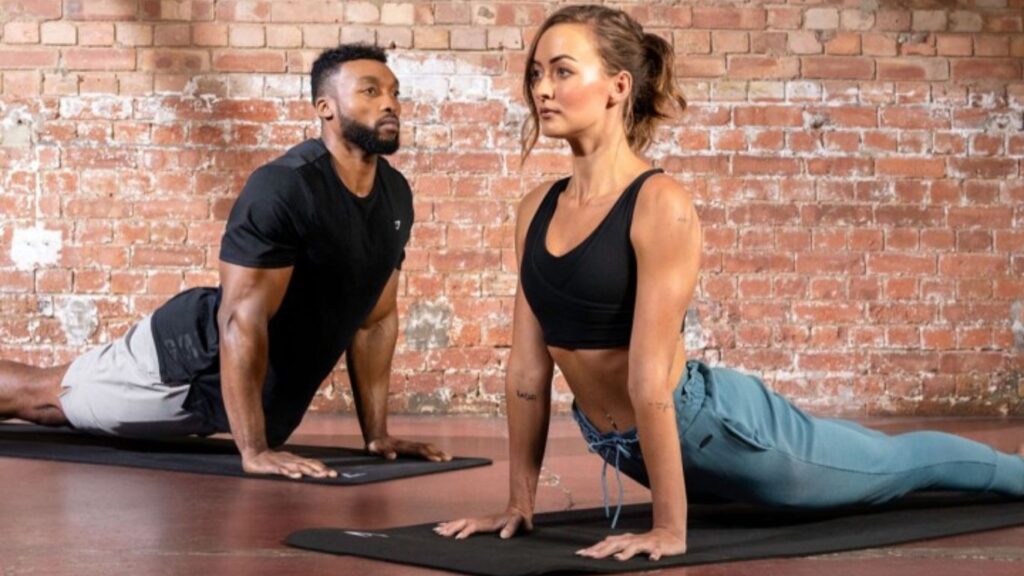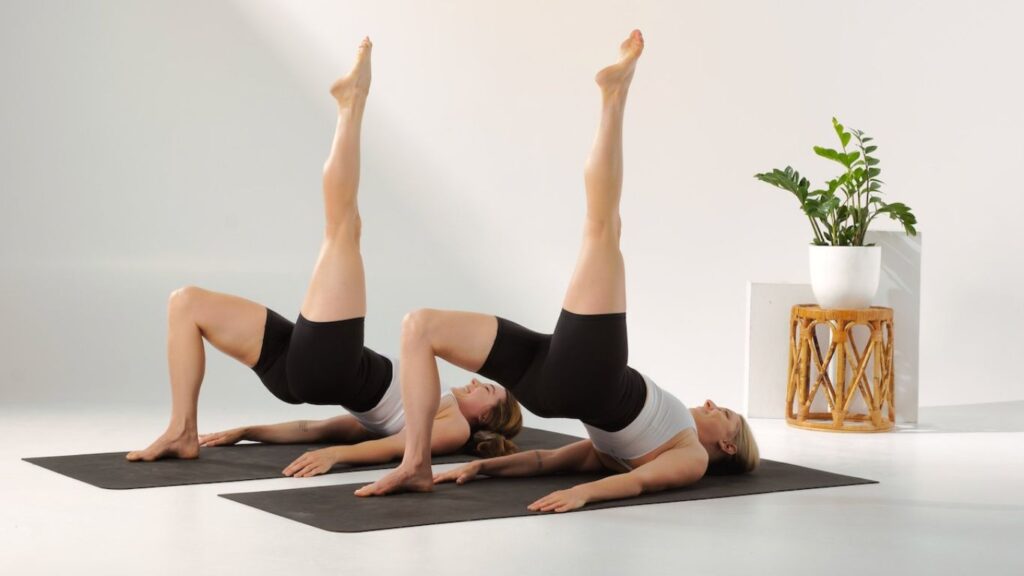Flexibility, the often overlooked pillar of physical fitness, is not just about touching your toes or twisting into pretzel-like yoga poses. It’s a vital aspect of our overall health, influencing everything from our range of motion to our posture. Enter Yoga and Pilates, two practices steeped in history and lauded for their flexibility-enhancing benefits. While they share a common goal of improving flexibility, they approach it in distinct ways that reflect their unique philosophies and methodologies.
Yoga, an ancient practice with its roots in Indian philosophy, goes beyond physical fitness. It’s a holistic approach encompassing physical postures (asanas), breath control (pranayama), and meditation. Each style of Yoga, from the gentle flow of Hatha to the vigorous sequences of Vinyasa, offers a path to increased flexibility, not just through stretching muscles but also by releasing mental and emotional tension.
On the other hand, Pilates, developed by Joseph Pilates in the early 20th century, takes a more structured approach to body conditioning. It focuses on core strength, posture, and controlled movements. Pilates exercises, often performed on a mat or specialized equipment like the Reformer, emphasize precision and alignment, leading to improved flexibility and muscle tone.
In this blog, we will explore how Yoga and Pilates contribute to flexibility, compare their approaches, and help you determine which might be better suited to your personal flexibility journey.
Yoga for Flexibility
- Diverse Range of Poses: Yoga includes a wide array of poses (asanas) that target different muscle groups, promoting flexibility throughout the body. Each pose stretches specific muscles, aiding in overall flexibility improvement.
- Gradual Muscle Lengthening: Regular practice of yoga gradually lengthens the muscles and tendons, which enhances flexibility. Poses like Downward Dog and Pigeon Pose are especially effective for stretching and lengthening.
- Improved Joint Mobility: Yoga not only works on muscles but also helps in increasing the range of motion in the joints, leading to improved flexibility and reduced joint pain.
- Breath-Control Integration: The integration of controlled breathing (pranayama) with movements in yoga helps in deeper stretching and relaxation of muscles, facilitating better flexibility.
- Reduction of Muscle Tension: Yoga poses help in releasing tension in tight muscles. This is particularly beneficial for those who have stiffness due to sedentary lifestyles or specific sports activities.
- Balance and Symmetry: Yoga promotes balance and symmetry in the body. By evenly stretching both sides of the body, it ensures uniform flexibility, preventing imbalances.
- Mind-Body Awareness: Yoga enhances mind-body awareness, encouraging a deeper understanding of one’s own physical limits and how to gently extend these boundaries to improve flexibility.
- Adaptability for All Levels: Yoga is adaptable for all fitness levels, from beginners to advanced practitioners, making it an inclusive practice for enhancing flexibility.

Pilates for Flexibility
- Core-Centric Approach: Pilates focuses on strengthening the core muscles (abdominals, lower back, hips, and buttocks), which is crucial for improving overall flexibility. A strong core supports a more flexible and efficient body movement.
- Controlled Movements: Pilates exercises involve precise, controlled movements that help to lengthen and stretch all the major muscle groups in the body. This methodical approach aids in enhancing flexibility and reducing the risk of injury.
- Alignment and Posture: Emphasis on proper alignment and posture is a key element of Pilates. This focus ensures that as flexibility improves, the body maintains correct form, preventing imbalances and chronic pain issues.
- Breathing Techniques: Pilates incorporates specific breathing techniques that are synchronized with movements. Proper breathing helps to activate deeper muscle groups, supporting further stretch and flexibility.
- Balanced Muscle Development: Pilates promotes an even conditioning of the body. By equally training all muscle groups, it prevents muscle imbalances, leading to a more harmonious and flexible body.
- Increased Range of Motion: Regular Pilates practice can significantly increase the range of motion in joints, making daily activities easier and improving athletic performance.
- Mind-Body Connection: Like yoga, Pilates also fosters a strong mind-body connection. This mindfulness can help in understanding the body’s limits and safely pushing boundaries to enhance flexibility.
Comparative Analysis: Yoga vs. Pilates
- Focus and Origin: Yoga, originating from ancient Indian traditions, focuses on holistic wellness, combining physical postures, meditation, and breathing exercises. Pilates, developed in the early 20th century by Joseph Pilates, concentrates primarily on physical conditioning, particularly core strength.
- Flexibility vs. Strength: Yoga typically places greater emphasis on flexibility and balance, utilizing static poses to stretch and strengthen muscles. Pilates, while also enhancing flexibility, focuses more on strengthening muscles, particularly the core, through controlled movements.
- Breathing Techniques: Yoga uses various breathing techniques to enhance relaxation and deepen stretches. Pilates employs a more consistent breathing pattern, focusing on diaphragmatic breathing to stabilize core muscles during exercises.
- Equipment Use: Traditional yoga generally requires minimal equipment, primarily a mat, with occasional use of props like blocks and straps. Pilates often uses specialized equipment, like the Reformer, for resistance training alongside mat exercises.
- Body Awareness: Both practices increase body awareness but in different ways. Yoga encourages mindfulness and connection with one’s body and breath, while Pilates emphasizes precision and alignment in each movement.
- Injury Rehabilitation: Pilates is often recommended for injury rehabilitation and improving posture, due to its focus on controlled movements and core strengthening. Yoga can also aid in recovery and flexibility but requires careful selection of poses to avoid strain.
- Accessibility and Adaptability: Yoga offers a wide range of styles and intensities, making it accessible to people of all ages and fitness levels. Pilates, while adaptable, can be more challenging for beginners, especially those with limited core strength.

Choosing Between Yoga and Pilates
- Individual Fitness Goals: Consider what you want to achieve. If your primary goal is to improve flexibility and mental well-being, yoga might be more suitable. For core strength and muscle toning, Pilates is often the better choice.
- Physical Condition: Evaluate your current physical condition. If you have back issues or need post-injury rehabilitation, Pilates can be particularly beneficial due to its focus on core strength and controlled movements. Yoga is suitable for those seeking gentle stretching and relaxation techniques.
- Mind-Body Connection: If you’re seeking a practice that incorporates spiritual and mental health elements, like meditation and deep breathing, yoga is ideal. Pilates is more focused on the physical aspect of strength and flexibility.
- Equipment and Accessibility: Consider the accessibility of equipment and classes. Yoga generally requires minimal equipment and can be practiced almost anywhere. Pilates often involves specialized equipment, which might not be as readily accessible.
- Variety in Routine: Yoga offers a wide range of styles and intensities, from gentle to physically demanding. Pilates is more uniform in its approach but varies in difficulty and complexity.
- Injury Considerations: If you are prone to injuries or have existing conditions, consult with a healthcare provider. Both yoga and Pilates can be modified to accommodate physical limitations, but it’s important to choose the one that aligns with your health needs.
- Personal Preference: Ultimately, the choice may come down to personal preference. Try both to see which practice resonates more with you in terms of enjoyment and overall benefit.
Both Yoga and Pilates offer unique benefits. The decision between the two should be based on your personal fitness goals, physical conditions, and preferences.
Conclusion

In conclusion, both Yoga and Pilates offer unique paths to enhancing flexibility, each with its own set of benefits. Yoga excels in improving holistic flexibility and balance, integrating mind and body through a variety of poses and breathing techniques. Pilates, on the other hand, focuses on building core strength and controlled movements, contributing significantly to muscular flexibility and posture. The choice between Yoga and Pilates ultimately depends on your personal fitness goals, physical condition, and preferences. Experimenting with both practices can provide a well-rounded approach to flexibility and overall wellness. Remember, the best choice is the one that aligns with your lifestyle and brings joy to your fitness journey.
Also read: Why Consistency And Patience Matters in Achieving Fitness Goals
